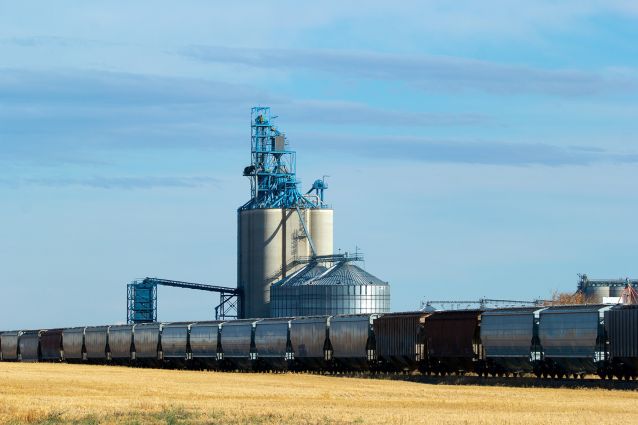Thanks to transnational worker organizing, the Canada-U.S.-Mexico Agreement (CUSMA) dramatically improves upon the weak labour protections in the original NAFTA. What’s more, the new agreement encourages deeper levels of cooperation and coordination between trade unions and labour allies across North America.
Through solidarity with Mexican sisters and brothers, labour activists in the U.S. and Canada can move away from xenophobic responses to North American integration that frame Mexico as a threat and, instead, help ensure upward harmonization of wages and labour standards across the region.
The labour chapter and facility-specific Rapid Response Labour Mechanism (RRLM) in CUSMA were designed to support constitutional and labour law reforms undertaken by the Mexican government between 2017 and 2019. The new labour law framework counteracts the undemocratic and corrupt system of labour relations that prevailed in Mexico for decades.
Mexico’s new labour law requires:
Universal, free, direct and secret votes for union leadership.
All collective agreements must be ratified in the same manner by workers, with observation by state authorities and with the possibility of international observation, and must be approved by 50 per cent of the workers.
The creation of a new Federal Centre for Conciliation and Labour Registration and new labour courts.
Reform of existing union statutes.
Provisions on gender parity in union leadership, and a new policy to prevent cases of sexual abuse and harassment in the workplace.
During the NAFTA renegotiations, Democrats in the U.S. congress and their allies in the AFL-CIO, America’s largest trade union federation, felt that simply affirming Mexico’s positive legislative reforms in CUSMA’s labour chapter would not be enough to ensure state and corporate compliance with workers’ rights.
And so, as a condition of securing Democratic support for the new NAFTA, they pushed the Trump administration and Mexican government to include a means for workers to directly raise labour rights violations.
The resulting RRLM has several key elements:
It’s facility specific. Unlike labour chapters that target the states in which the violations are alleged to occur, the RRLM sanctions companies (often but not always U.S.-based) in specific “covered facilities” in Mexico that engage in illegal practices that deny workers their basic labour rights.
It’s rapid. In place of the often endless consultations that followed the filing of a dispute under the NAFTA labour side accord, there are tight deadlines on both companies and governments to respond.
It’s tough. Harsh sanctions can be levied on companies that fail to remedy proven labour rights violations. Under the RRLM’s streamlined dispute process, the United States and Canada can suspend preferential tariff treatment or even block the entry of goods from non-compliant facilities as few as 120 days after initiating the dispute process.
The RRLM process has its limitations. For example, it does not apply to facilities in the United States or Canada, ignoring the many violations of labour rights that occur in these countries. The mechanism thus reflects the continued asymmetry between the CUSMA partners.
How is the RRLM working so far?
The initial rollout of the CUSMA rapid response labour mechanism was slow, but it has been picking up pace. Only two RRLM cases were filed in 2021 and four in 2022; the number increased to 13 in 2023. There were seven new cases as of July 2024, bringing the total to 26 cases.
Up to June 2023, all RRLM cases were in the automotive sector—the most important sector for the regional economy and of keen interest to both unions and the U.S. government. Since then, however, use of the mechanism has spread to other sectors, including non-automotive manufacturing (e.g., a firm that produces small arms ammunition), telecommunications, food production, the supply of services, and mining. Most of the targets of the complaints are subsidiaries of U.S.-based firms.
The Canadian government has only submitted one RRLM case, in 2023, at an auto parts plant. The U.S. Trade Representative’s (USTR) office is doing the heavy lifting, reflecting the Biden administration’s labour-friendly trade policies. The U.S. government considers that 17 of the 22 cases it referred to Mexico were successfully resolved, often through agreements between the parties on remediation plans.
According to the USTR, as of April 2024, the cases have directly benefited nearly 30,000 workers through $5 million USD in back pay and benefits, the reinstatement of some wrongfully terminated workers, and the securing of free and fair elections in some of those facilities where claims were filed. Where new votes were held, workers have overwhelmingly selected independent unions.
At one worksite, VU Manufacturing, the mechanism was used twice in response to continuing violations. The plant closed, and the workers involved (mostly women) lost their jobs.
Transnational activism plays a critical role in the success of the rapid response mechanism.
Most independent unions, which are struggling against long-established “protection unions”, are weak and poorly resourced. Mexican workers often know little or nothing about their rights under the new labour reform. Cases are most likely to be submitted in facilities where workers are supported both by independent unions and their international allies from the U.S. and Canada.
However, the failure of the mechanism to address labour violations in the U.S. and Canada is a serious limitation. Moreover, the sectors and geographic areas where the RRLM applies in Mexico should be extended to cover more of the economy. The RRLM does not consider gender-based violence or harassment or gender discrimination as criteria for consideration in cases. The fact that Canada has only submitted one case is a significant concern.
The use of the mechanism is picking up speed—a sign that more actors are gaining confidence in using it. Still, only a small percentage of the Mexican workforce has benefited.
Mexico’s labour law reform has the potential to assist many more workers, in all sectors of the economy. However, critics are concerned that it has failed to significantly transform the culture and practices of labour relations in Mexico.
For example, the reforms required that the hundreds of thousands of Collective Bargaining Agreements (CBAs) covering workers at Mexican facilities be legitimized by workers, through free and fair elections, by July 2023. Only some 20 per cent of CBAs were legitimized by that point, meaning that 80 per cent of contracts were declared invalid.
According to a study by the Centro de Investigación Laboral y Asesoría Sindical (CILAS), barriers to the labour law’s implementation are a result of obstructive behaviour by employers and their continued collusion with corrupt protection unions, which are dragging their feet in adopting more democratic procedures and values.
Clearly, there is a need for continued transnational solidarity and cooperation to ensure Mexico’s important labour reforms take hold. The U.S. and Canadian governments have a role to play as well, in providing resources to democratic labour organizations in Mexico—and by facilitating the RRLM petition process.
All three North American governments should consider further improvements to the CUSMA labour chapter and RRLM, including its application in Canada and the U.S., during a 2025 review of the labour chapter and 2026 general review of the full agreement.







